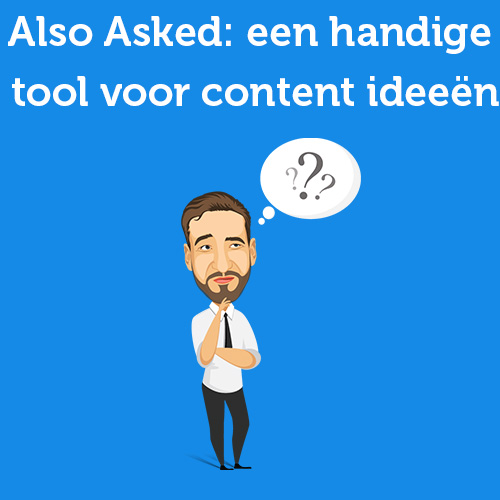Menu
Table of contents
What is plagiarism?
Before going into ways to avoid plagiarism, it is important to have a clear idea of what plagiarism means. In fact, plagiarism is more than just copying text. It also involves using someone else's images, videos, music and even ideas without citing the source. This means that not only copying pieces of text verbatim, but also adapting or paraphrasing someone's work without acknowledging the owner, is considered plagiarism. So it is important to clearly state where it came from in any use of material that does not belong to you.
How do you recognize plagiarism?
How do you know if your content is stolen? For that, you can use tools such as Google Alerts or specialized software. These tools compare your work with content on the Internet and notify you if similarities are found, allowing you to take quick action against possible plagiarism.
No tools at your disposal? Then there is a simple, manual way to check for plagiarism and see if your text is being used elsewhere without your permission. You can do this by pasting excerpts of your own text between quotation marks ("") in Google's search bar, specifically searching for exact matches of your text on the Internet. The quotation marks force the search engine to look for the exact sequence of words within the characters, without any variation. This allows you to immediately see if your texts have been copied literally from somewhere else. This is an effective way to identify plagiarism because it allows you to quickly discover if your work is being used or copied without permission.
Note that it is important to remember that this way works primarily for textual content and is less effective for images, videos or other media. Special software such as reverse image search tools are recommended for this purpose.
Here's how to prevent plagiarism
Have you put a lot of effort into original writing? And are you facing the challenge of how to prevent your content from being stolen by others?
These tricks will help you do that and make it harder for others to steal your content:
- Handle a unique structure and writing style
- Place internal links. Once someone copies the text then these links will point to your website.
- Publish original data and research. This type of content can be recognized if copied.
- Make use of legal warnings. Adding copyright notices to your content sends a clear message that your work is protected and should not be used without permission.
- Vary your content. Use a mix of different content types. For example, text, video and infographics. This makes it harder to copy text in its entirety
- Encrypt your content. Consider using SSL certificates, for example. This is visible as the green lock in the search bar and the "HTTPS."
Would you also like to protect your images from plagiarism? Then add watermarks, this makes it harder for others to use your visual content.
Here's how to prevent AI from using your content
Even AI can plagiarize. Very easily, in fact. An AI tool is asked a question and then uses your text or information from your text to generate the answer. Annoying, of course, because you have put blood, sweat and tears into your text. Fortunately, you can prevent as much as possible with a number of measures:
- Add a personal touch. Make sure your texts contain anecdotes, experiences and/or opinions. This is difficult for AI to use.
- Make use of interactive elements. Think of surveys, quizzes or interactive graphics. This is difficult for AI to adopt.
- Create dynamic content. In other words, update your content regularly. As a result, AI tools that have scanned older versions will not have up-to-date information.
- Use copyright meta tags. This indicates that your content is copyrighted and not intended for reuse.
- Publish your content on trusted platforms. These often have good protection measures for content theft.
WordPress plugins against plagiarism
Besides the measures you can already take yourself, there are also a number of WordPress plugins and anti-plagiarism tools you can use to protect your content. These are the top 3 most popular plugins:
Secure copy content protection
This is a WordPress plugin that prevents copying and pasting of content, including disabling right-clicking. So this prevents someone from trying to copy text by selecting it and then right-clicking to choose the "copy" option. It is like putting an invisible shield over the text. In the process, it also prevents people from using certain tricks to steal your content through the browser code.
Smart content protector
This WordPress plugin goes one step further. You protect not only your text, but also your images from being copied. As a bonus, you can even add a watermark to your images, meaning that if someone uses your image somewhere else, it will still have some sort of digital signature of your website on it. It also keeps track of who tries to copy your content, which can be useful for further actions.
WP content copy protection
A user-friendly plugin that prevents people from copying and pasting your texts or even your audio and video material elsewhere. You can choose where on your website this protection should be active, such as on certain pages, posts or categories.
A variation of this plugin is the "WP content copy protection and no right click". This disables the right-click feature so that by clicking on it and choosing "save as," no one steals your images or texts.
Extras
Would you like overall protection for everything on your site? Then choose "WP content protector." This ensures that no one can just copy your content by using the usual keyboard shortcuts (such as CTRL+C) or save and drag images. It's like having your website in a safe vault. Would you like your visitors to be turned into subscribers? Then "Opt-in locker plugin" is the best option. This locks content on your website until visitors submit their contact information. Here you can think of special offers or important information. Once visitors enter their email address, this hidden information becomes visible.
On their own, these plugins often counter plagiarism quite well. But of course you can also combine them for even better protection!
Is there still plagiarism? These are the next steps
Have you done everything possible to prevent plagiarism and unfortunately texts have been copied without permission? Then it is important to respond quickly and thoughtfully.
The first step in this is to establish plagiarism. This can be done through direct comparison of content and gathering evidence. Have you established plagiarism and have evidence? Then the next step is to approach the person or organization responsible.
A formal warning letter asking you to remove or modify the infringing content is often the best thing to do. Does this not lead to a desired solution? Then you might consider taking legal action.
You can also choose to report the plagiarism to Google. Submit a spam report through Google Webmaster Tools. Google values unique content and takes action against sites with duplicated content.
Can AI use my written content?
Yes, AI can use written content to generate answers to questions asked or to produce new text.
How do paraphrasing and plagiarism differ?
Paraphrasing involves restating the ideas or information from a source in your own words. In doing so, you do not use the exact wording used. Plagiarism, on the other hand, is the exact copying of someone's work without proper acknowledgement or permission.
What WordPress plugins are available for countering plagiarism?
Some popular WordPress plugins include Secure Copy Content Protection, Smart Content Protector and WP Content Copy Protection. These plugins prevent copying and pasting of content and offer additional features such as adding watermarks.











Written by: Sarah Veenboer
Sarah is an online marketer at OMA. This amateur performer will also make your website shine on the most beautiful stage there is: Google's search results.